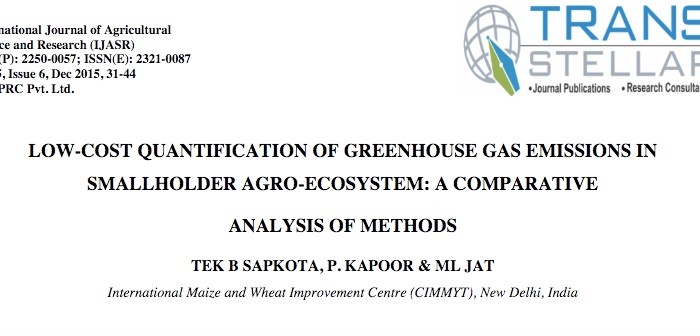
Quantification of greenhouse gas (GHG) exchanges between agricultural field and the atmosphere is essential for understanding the contribution of various production systems to the total emissions, develop mitigation options and policies, raise awareness and encourage adoption. But, GHG quantification from smallholder agricultural landscape is challenging primarily because of the heterogeneity of production systems. Various methods have been developed over years to quantify GHG fluxes between agricultural ecosystem and atmosphere. In this paper, we reviewed and analysed the common methods with regard to their scale and precision of quantification, cost effectiveness, prospects and limitations focusing mainly on smallholder production systems. As most of the quantification methods depend on ground data and due to data deficit for smallholder systems, field measurement must be an essential part of GHG emission inventories under such systems. Chamber-based method is a principal approach for field level quantification under smallholder production system mainly because of its cost effectiveness, portability and adoptability under diverse field conditions. However, direct measurement of GHG for all mosaics of smallholder production landscape is impractical and therefore use of models becomes imperative. Here, selection of suitable models and their rigorous parameterization, calibration and validation under various production environments are necessary in order to obtain meaningful emission estimation. After proper validation, linking dynamic ecosystem models to geographic information system (GIS) helps estimating GHG emission within reasonable time and cost. Integration of different approaches such as chamber-based measurement to generate field data, simulation modelling by using empirical as well as process-based models coupled with use of satellite imagery may provide a robust estimate of GHGs emission than use of a single approach.








